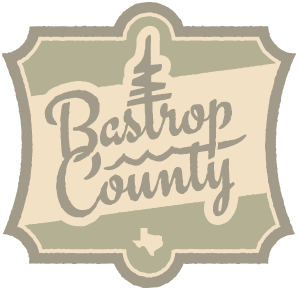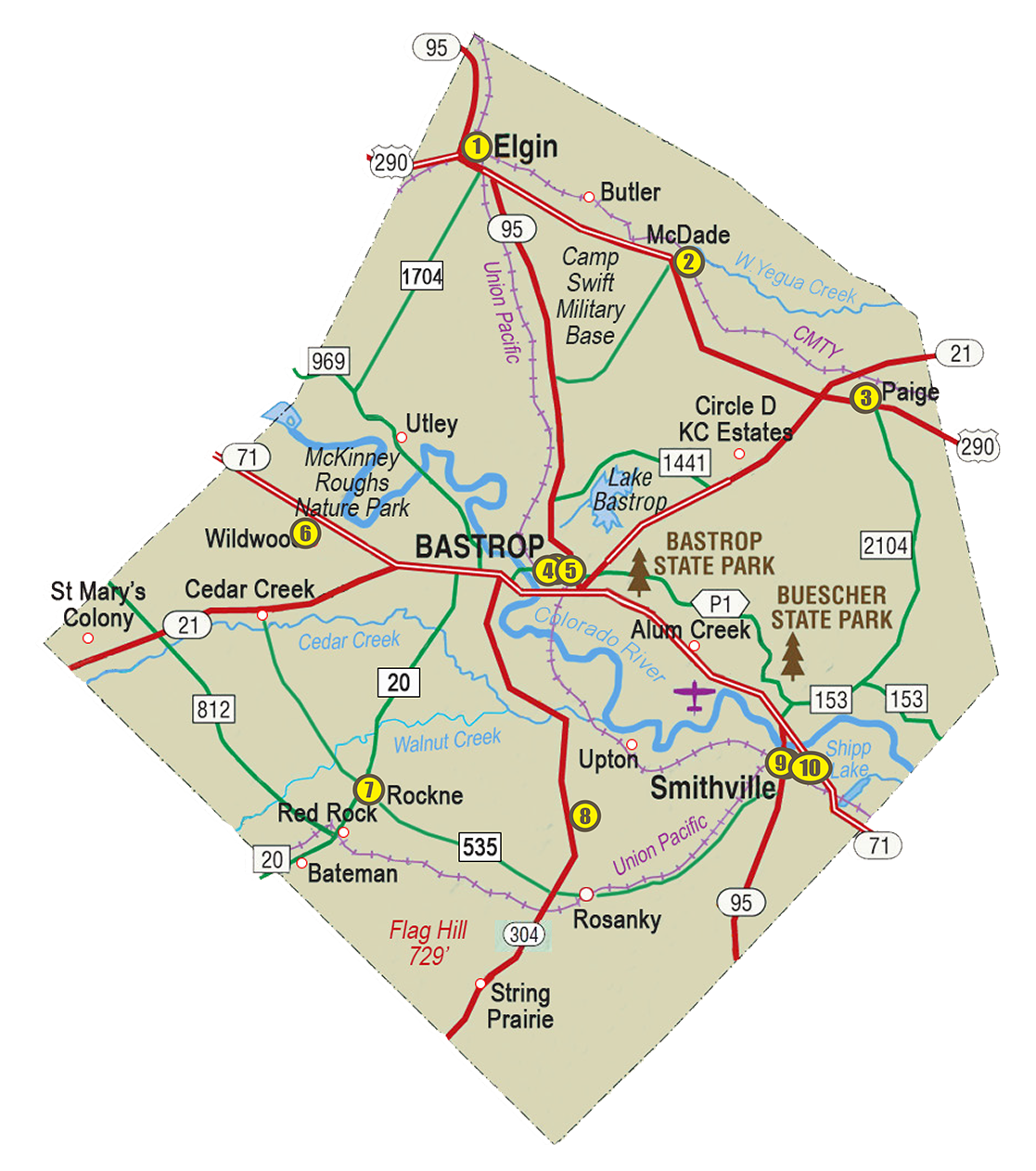Tour of Bastrop County Museums & Other Interesting Sites

Enjoy the rich history in Bastrop County as featured by our 10 historical museums, including a Halloween Park and a Dinosaur Park nature trail! And in addition to the wonderful museums located below, we have compiled several notable sites worthy of attention for our heritage tourists, and a list of resource organizations in Bastrop County.
You can download a Museums guide and check out the sites of our partner museums. Happy history travels!
Map Legend
- Elgin Depot Museum, 14 Depot Square @ Main and Depot Streets
- McDade Historical Museum, Main Street, McDade
- Paige Historical Museum, Highway 290, Paige
- Bastrop County Museum & Visitor Center, 904 Main Street, Bastrop
- Bastrop County African American Cultural Center & Freedom Colonies Museum in Bastrop, Texas
- The Dinosaur Park outdoor nature trail in Cedar Creek, TX
- Rockne Museum & Hilbig Park, 4065 FM 535, Hilbig Park, Rockne
- Texas Halloween History Museum at Scream Hollow, 149 Split Rail Lane, Smithville
- James H. Long Railroad Park and Museum, 100 NW 1st Street, Smithville
- Smithville Heritage Society, 602 Main Street, Smithville
- Other Interesting Places to Explore
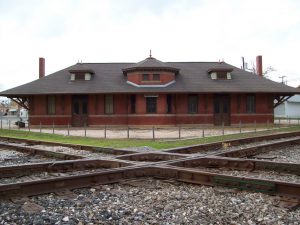
Elgin Depot Museum
14 Depot Square @ Main and Depot Streets
Elgin, Texas 78621
512-285-2000
Friday & Saturday: Noon to 4 p.m.
Facebook: Elgin Depot Museum
1.The Elgin Depot Museum, located in the historic 1903 Union Depot, harkens to the frontier days when the Railroad connected markets and “cotton was king.“ Imagine Bastrop County with streets filled with oxen, mules, wagons, and horses rather than automobiles, pickup trucks, and motorcycles.
The City of Elgin was founded in 1872 after the Houston and Central Railroad established a depot and named it for Robert Morriss Elgin, the railroad’s land commissioner.
The Elgin Historical Association (EHA) with support of the city and citizens from the surrounding area restored the original depot building and opened the Elgin Depot Museum in 2002. It offers three exhibit rooms, a photo archives, and historical artifacts with permanent and rotating exhibits.
Come explore the history of railroads, films, military, agriculture, and celebrate the rich Swedish, German, Irish, Mexican, Black founders whose multicultural heritage defines Texas today.
Trains still run and if you are lucky a train will blow its whistle as it passes by.
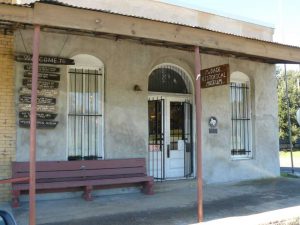
McDade Historical Museum
557 Old Highway 20
McDade, Texas 78650
512-273-5151
Saturday: 1-4 p.m.
Free Admission
Facebook: McDade Historical Society
2. The McDade Historical Society Museum is housed in the oldest building in McDade, built in 1873. It served as a stagecoach stop and saloon, and outlaws such as Sam Bass, Johnny Ringo, Wild Bill Longley, and John Wesley Hardin walked through its doors. The coming of the railroad brought gamblers, pickpockets, and men intent on making their fortunes in McDade one way or the other.
Before that, Tonkawa Indians camped along Paint and Yegua Creeks, and the Comanche sent smoke signals from nearby hills. Once home to a remote trading post, McDade first became known as Tie City or Tie Town, because the railroad stored railroad ties made from area trees.
After the Civil War, violence rose to a peak involving gangs, shootouts, and hangings. The saloon was central in the infamous Christmas Eve hangings and Christmas Day shootout.
In addition to preserving McDade’s wild west history, the museum houses a great collection of early day Texas furniture known as the “Jackson chairs.” Because of the nature of the clay beneath its sandy soil, McDade had many potteries, and the museum showcases numerous examples.
Other items of interest include a display of 19th century furniture from the old Central Hotel, Indian artifacts, a bow from a covered wagon and iron kettle brought by an early pioneer, along with hand forged nails from a cabin of the first man reputed to yell “Remember the Alamo!” at the Battle of San Jacinto, McDade resident Captain Jesse Billingsley.
McDade is named for James W. McDade, a railroad lawyer with the Houston & Texas Central Railroad. Located in the A. Martinez Survey, Bastrop County, McDade received the first train in 1871.
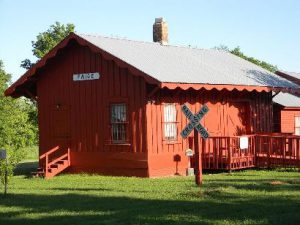
Paige Historical Museum
111 Main Street off U.S. 290
Paige, Texas 78659
512-253-1111
3. A museum in the old depot adjoins the community center on the south side of Hwy 290. The museum is open by appointment – or “any time you see cars parked in front of the museum.”
Next door is the memorial to Doris Laake who was the longtime unofficial community historian and the reporter for area newspapers with Paige news.
The town began with the arrival of the Houston and Texas Central Railroad in 1872. The name chosen was to honor the railroad’s civil engineer, Norman Paige. The depot was first located three miles west of the present location, but moved in 1876. Paige was granted a post office in 1874. In 1877, a German immigrant by the name of Fedor Soder arrived and built a cotton gin and store. He bought undeveloped land and broke it into small farms for the more recently arrived German settlers.
In addition to cotton, the town shipped cordwood, produce, cattle and swine. For local consumption and use, Paige manufactured brooms and had both a creamery and a pickle factory. The population declined to 400 by 1914 but the remaining citizens could call one another on the recently installed telephone system.
By 1952 Paige had an estimated population of 220. In the early 1980s Paige established both a community center and a volunteer fire department. The 1990 and 2000 census reported 275 people. In 2023, population had fallen to 142 people.
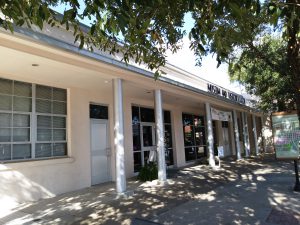
Museum & Visitor Center of the Bastrop County Historical Society
904 Main Street
Bastrop, Texas 78602
Museum: 512-303-0057
Visitor Center: 512-303-0904
Monday thru Saturday: 10 a.m. to 5 p.m.
Admission $5
BastropCountyHistoricalSociety.com
4. In the heart of Downtown Bastrop, visit the remarkable Bastrop County Museum that includes more than a dozen exhibits about a community that was founded before the Texas Revolution and almost became the state Capital. Stop by the front desk of the Visitor Center where helpful volunteers are armed with handy, easy-to-use brochures and area maps. You can find information about shopping, dining and recreation and see Bastrop’s first motorized fire truck!
Museum exhibits include a historical timeline and fascinating histories on El Camino Real de los Tejas, the Colorado River, Lost Pines, the Baron de Bastrop, Settlement, Independence, Runaway Scrape, Cotton, World War II, Camp Swift, Governor Sayers, Coal Mines, and Cowboys, Cows and Cattlemen. Artifacts span from prehistoric times to the 21st century, and documents date back to the 1832 Minutes of the Incorporation of Bastrop.
Also, BCHS offers quarterly speaker meetings, scavenger hunts for kids, walking tours of downtown, docent guided step-on-bus tours of the historic district and docent-led tours of the Museum. Call to schedule a tour.
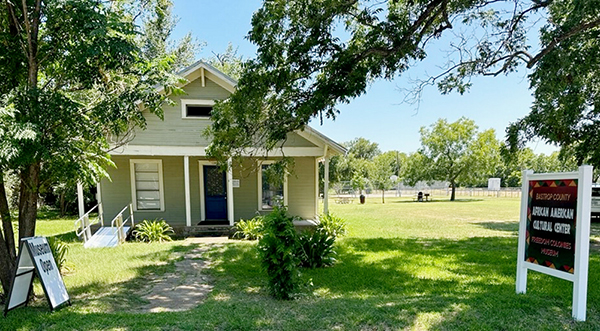
Bastrop County African American Cultural Center & Freedom Colonies Museum
1303 Pine Street
Bastrop, Texas 78602
512.535.6949
info@bcaacc.org
Admission $5
CoalitionOfFreedomColonies.org
www.BastropCountyAfricanAmericanCulturalCenter.org
5. The Bastrop County African American Cultural Center focuses on the diverse contributions of peoples of color to the history of the United States. The cultural center teaches others of the rich history of African Americans and their relationship with other cultures.
It is a harbinger of cultural artifacts, history, black art, and futurist ideas that are inclusive of all cultures working together in harmony. The goal is to increase cultural awareness that promote a better understanding of African Americans and other cultures. The cultural center plans to achieve its goal through teaching, training, showcasing, inclusiveness, uniting all cultures through harmonious relationships and coalitions, mutual respect, and appreciation.
Most of the original Founders descend from the 13 original Freedom Colonies in Bastrop, Texas, though there were more, and there are special exhibits set up with maps, and items from the past.
the dinosaur park
893 Union Chapel Rd
Cedar Creek, Texas
512-321-6262
www.thedinopark.com
Admission $10 age 2-12; $11 Adults
6. The Dinosaur Park features a unique outdoor museum setting with realistic life-size dinosaur exhibits that show skin and color variations to give a better understanding of how they looked when they were alive. These static statues range in size from the 2-foot long Compsognathus to the 123-foot Diplodocus, one of the longest dinosaurs that ever lived.
As you walk through a tree-lined nature trail, the dinosaurs sit back from the trail, situated among plants, trees and rocks, making it easy to imagine real dinosaurs in a natural environment.
The Dinosaur Park is an educational and fun place, where everyone can learn about the majestic animals that ruled our earth for over 150 million years.
Other activities include a fossil-dig, playground, picnic area and a wonderful Dinosaur Store stocked with a variety of gifts sure to please any dinosaur fan!
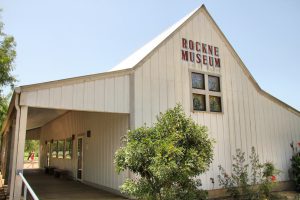
Rockne Museum & Hilbig Park
4065 FM 535, Hilbig Park
Rockne, Texas 78602
512-304-8379 or 512-581-2625
Free Admission
Facebook: Rockne Historical Association
7. The legend of Small Town Texas still exists at Rockne, located off Highway 20 between Bastrop and Lockhart. Named after the fabled Notre Dame football coach, the town’s actual history goes back to early 1846 when German settlers established a small Catholic farming community.
Today the area is inhabited by many of those early immigrants’ descendants. The Rockne Museum, built as a testament to life in rural Texas, exhibits items of both the nineteenth and twentieth centuries including sacrifices made for the United States’ historic war efforts.
Step back in time as you explore two different historic homes filled with artifacts used by the cabins’ original owners. Connect with a thriving faith community as you discover a collection of items from the 19th century Catholic Church, including an ornate altar, beautiful stained glass and baptismal font. Other historic structures include a corn-crib, smokehouse and out-house.
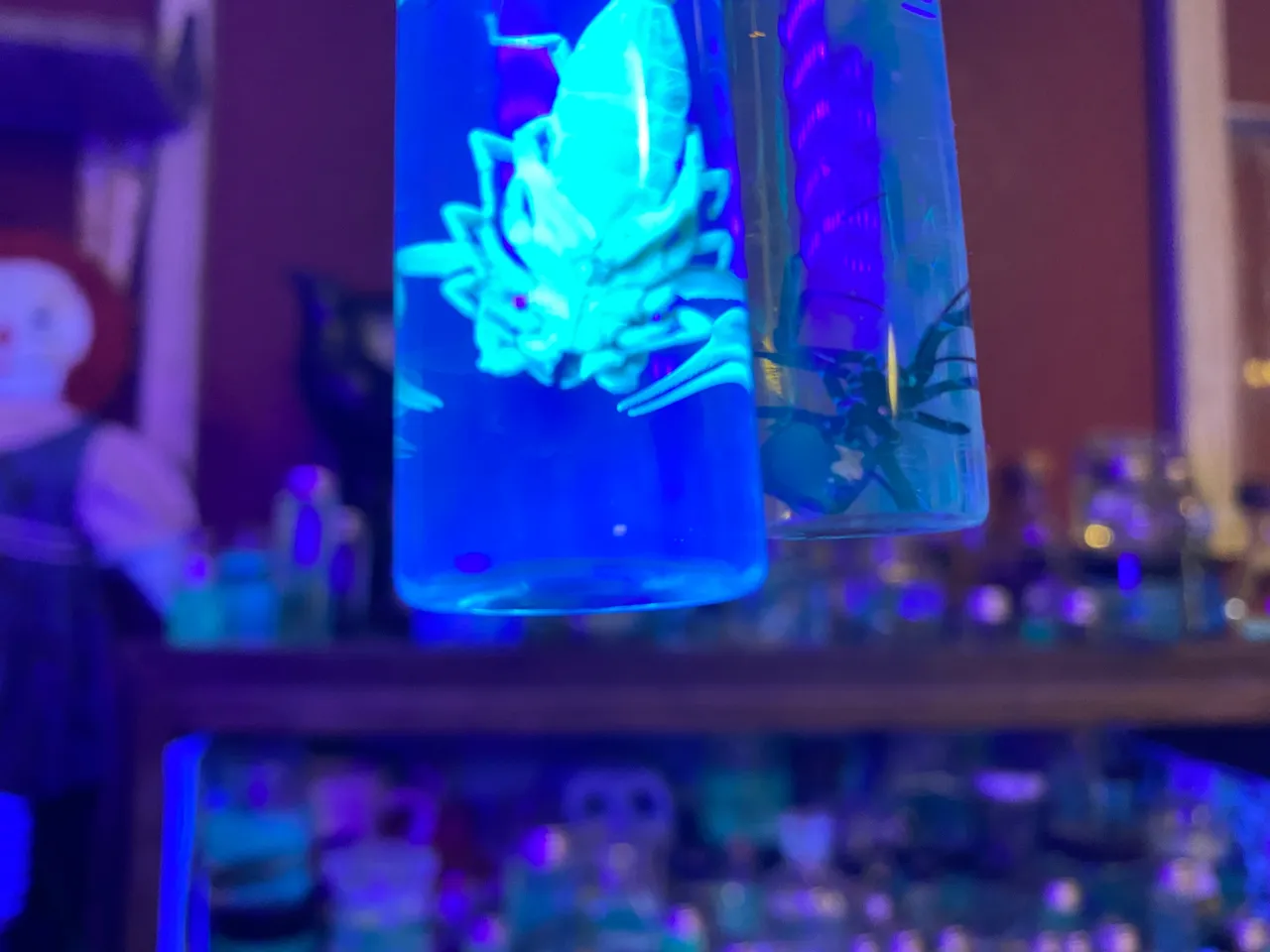
Texas Halloween history museum
149 Split Rail Lane
Smithville, Texas 78957
512-658-7996
Hours change seasonally
Facebook:Scream Hollow Wicked Halloween Park
TexasHalloweenMuseum.com
8. The Texas Halloween Museum comprises three buildings full of interactive Halloween History, excitement and learning, all located within Scream Hollow Wicked Halloween Park, 10 minutes south of Bastrop. The World’s only museum dedicated to preserving the History of Halloween, Halloween’s influence on culture and Haunted Halloween!
The gift shop and additional exhibits located in the main museum building are ever-changing for a new experience each season.
The museum helps the public understand the history and culture of Halloween with a hint of mystery and magic.
The museum’s education programs are geared toward all ages of diverse socio-economic backgrounds, and partners with area schools to engage students in learning about history & culture as well as to the wide variety of careers in acting, preservation, molding and casting, set design and more!
The site also hosts Paranormal Investigations and other events seasonally.
As you explore the museum, you will discover everything there is to about the origins and interesting little-known history of what has evolved to the Halloween holiday of today!

James H. Long Railroad Museum & visitor center
Inside Smithville Area Chamber of Commerce building
106 NE 1st Street
Smithville, Texas 78957
512-237-2313
Weekdays: 10 a.m. to 4 p.m.
www.smithvilletx.org/art-museums
9. The Smithville Area Chamber of Commerce hosts the museum in its Visitor Center, celebrating a rich railroad history in the area. In 1887, a railroad line reached connecting mid-west business to Texas and to Houston and Galveston. In 1894, the Missouri, Kansas and Texas (MKT) established its central shops and terminal in Smithville, making it a major employer, swelling Smithville’s population, and solidifying it as the largest town in the county until the 1940’s.
In 1911, a boiler explosion killed 9 men and injured 12 others, with pieces of the train found several blocks away. A piece of wreckage is displayed outside.
The white gazebo nearby (formerly the decorative top of the town’s City Hall) beckons you to the Railroad Park and its special events area which includes a historic depot moved from nearby West Point, train cars, and playground.
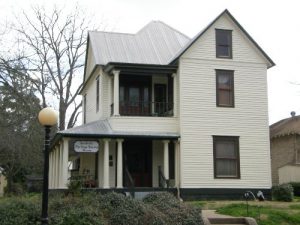
Smithville Heritage Society MUSEUM
602 Main Street
Smithville, Texas 78957
Tuesdays: 10 a.m. to Noon
or call 512-629-2197
Facebook: Smithville Heritage Society
10. The lovely 100-year plus old house-museum, built in 1908 in downtown Smithville, is open only by appointment. However, volunteers are usually working in the metal archives building behind the home on Tuesday mornings between 10 a.m. and noon, visitors are welcome in the archives. Call the above phone numbers and leave a message to schedule a tour of the home or to get help with research on early Smithville and its inhabitants.
The first settler in what is now Smithville was Dr. Thomas Jefferson Gazley who established him on site now called Independence Park and eventually opened a medical practice and store. The Smith family soon followed, opening a trading post, and the “Old Smithville Village” grew along the Colorado River.
After the arrival of the M-K-T railroad in 1887, the population grew to the point that until the beginning of World War II, Smithville was the largest town in Bastrop County.
There are exhibits in the house that take you back to the early 1900s when this former home was built. Old newspapers, photographs, documents, maps, Smithville cemetery information, and other donated artifacts are kept in the metal archives in the back building.
Other Interesting Places to Explore
Bastrop County Courthouse & Jail
804 Pecan Street, Bastrop, TX
The first courthouse, 1835, was a two-story building owned by early settler S.V.R. Eggleston. The second, built 1839, was a house located between Walnut and Austin Streets. The third, built 1853, was at the site of its current location and burned in 1883. A new brick courthouse was built in 1883 for $33,000. In 1991 the courthouse was fully restored for full use today. The jail was built in 1892.
The Lost Pines Region and the Civilian Conservation Corps (CCC) at Bastrop and Buescher State Parks
100 Park Road 1A, Bastrop
100 Park Rd 1C, Smithville
Adapted over thousands of years to local dry climate and soils, Bastrop’s Lost Pines are the westernmost stand of Loblolly Pines. The Bastrop County Complex Wildfire of 2011 was the most destructive fire in Texas history, but replanting and regrowth is well underway, restoring the beauty of the forest. The parks’ buildings, bridges and trails are also shining examples of the Civilian Conservation Corps, a program created by President Franklin D. Roosevelt to provide jobs for young men during the Great Depression.
three historic downtowns
Main Streets in Bastrop, Elgin & Smithville
Historic buildings still make up the bulk of the historic downtowns around Main Streets in all three of our incorporated cities. Walk the sidewalks and think of how times used to be with long dresses, dusty roadways, and horse, buggy, and railroads as transportation. As a bonus, each town has many historic homes so check out their historic districts!
Camp Swift
1705 TX-95 N, Bastrop
Camp Swift is named for Major General Eben Swift, and during World War II, served as a major military training facility for 300,000 troops and housed German prisoners of war. The camp was active May 1942 until July 1946, and covered nearly 56,000 acres. Today Camp Swift is a training center for the Texas Army National Guard.
Fairview Cemetery
1307 TX-95, Bastrop
In Fairview Cemetery, you’ll find graves of war veterans from the War of 1812 to the Persian Gulf War. A War Babies Guardian Angel statue stands over the area where a number of infants, whose families had no means to bury their children, were interred free during World War II. Texas Governor Joseph Draper Sayers, Lt. Gov. and Congressman G.W. Jones, numerous legislators and 13 Texas Rangers are also buried there.
SMITHVILLE TEXAS VETERANS MEMORIAL PARK & splashpad
311 NW 2nd Street, Smithville
Memorial Park includes listings of county veterans and the conflict in which they served. A large angel statue, titled “Going Home,” stands over the memorial with a cherub holding a quill as if just finished writing down the names of young veterans from Smithville who lost their lives within a short period of time. A splash pad for young children represents hope for the future.
hopewell rosenwald school
690 State Hwy 21 W, Cedar Creek
Established in 1921 as part of the Rosenwald School Building Program, Hopewell School taught African American children until 1959. The 1.5 acres was deeded from the McDonald estate (former slaves) for a school and a church (Hopewell Primitive Baptist est. 1950) to serve the Hopewell community. Only 40 out of 527 Rosenwald schools in Texas survive, and some have been altered. Hopewell and the church next door remain intact. Four other Rosenwald schools were built in the County in the early 1920s.
Rock Front Saloon
Main Street & Loop 223, McDade
A gunfight happened at the 1870 Rock Front Saloon in 1883 when a deputy sheriff was killed. Vigilantes hanged four suspects and the violence continued with the infamous McDade Christmas lynchings on Christmas Eve 1883, when three additional outlaws were executed. This led to a yet another gunfight in front of a saloon on Christmas Day, leaving three more citizens dead.
Post office new deal artwork
21 N Avenue C, Elgin
400 Main St, Smithville
In the 1930’s and 40s in the midst of the Great Depression, artists painted murals in public places so that the art was accessible to everyone. Bastrop County boasts two murals out of 60 painted in Texas. In 1940 using oil paint, Julius Woeltz painted “Texas Farm”in the Elgin Post Office, and Minette Teichmueller painted “The Law – Texas Rangers” in the Smithville Post Office.
With this history “immersion” you might want more detailed information. Below are the historical educational resources including genealogy, cemeteries, historical markers, commissions, societies, libraries and the Bastrop County Clerks Office.
Historical Resources
Bastrop County Historical Commission
512-940-7897
Facebook: Bastrop County Historical Commission
Historical Markers, Cemeteries, Resources
Bastrop County CLERK’S OFFICE
512-332-7234
www.co.bastrop.tx.us/page/co.county_clerk
Bastrop County Historical society
512-303-0057
www.bastropcountyhistoricalsociety.com
Bastrop County genealogical society
512-321-5441
www.bastropcountyhistoricalsociety.com
Bastrop public library
512-332-8880
Elgin Historical Association
512-285-2000
elgindepot@gmail.com
Elgin public library
512-281-5678
mcdade Historical society
512-273-2566
Paige Historical Association
paigetexasmuseum@gmail.com
Rockne Historical Association
https://sites.rootsweb.com/~txrha/
Facebook: Rockne Historical Association
Sayersville Historical Association
512-964-1602
Smithville HERITAGE Society
512-629-2197
smithvilleheritage@gmail.com
Smithville public library
512-237-3282 ext. 6
